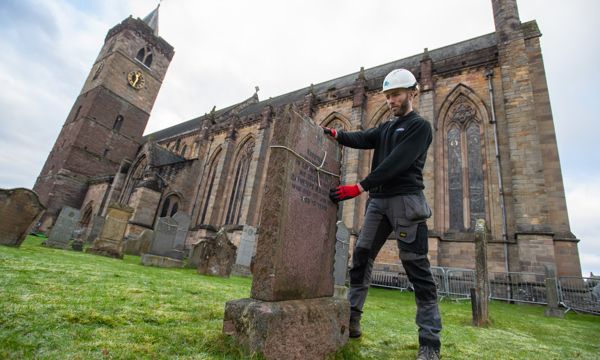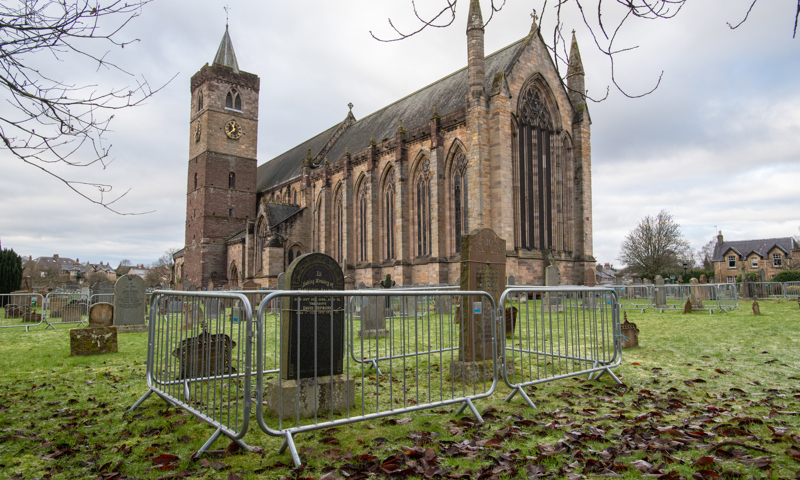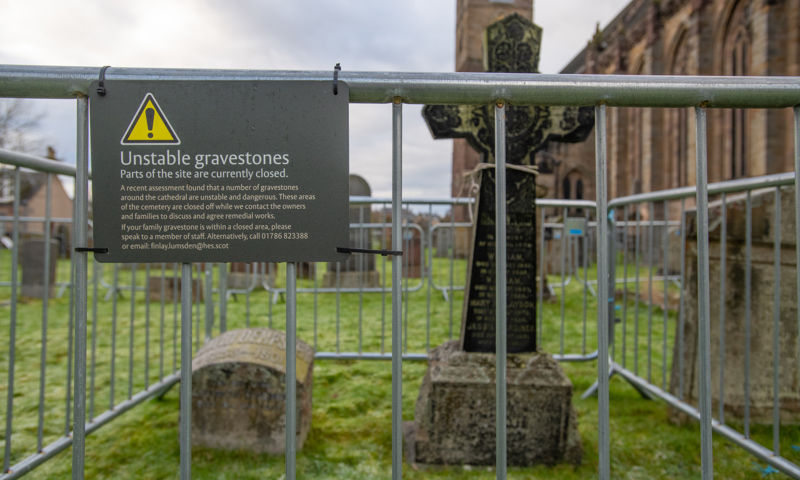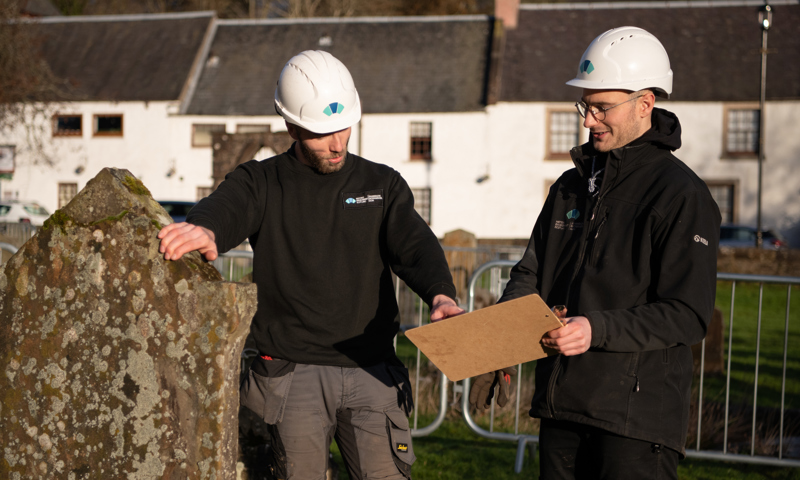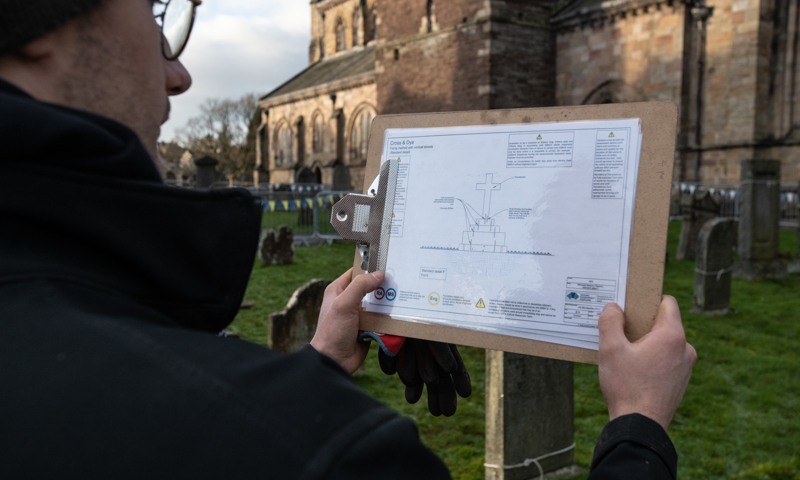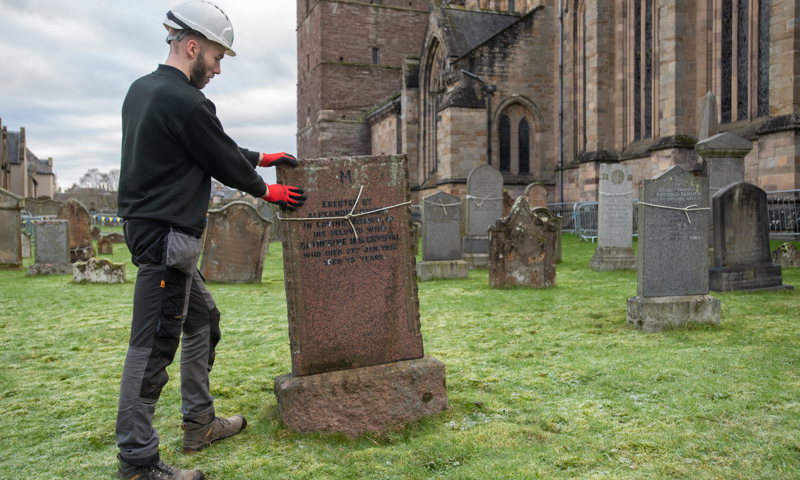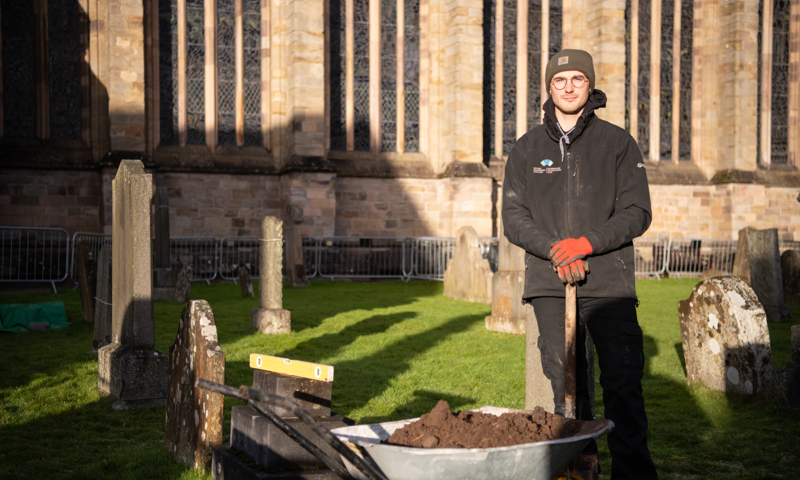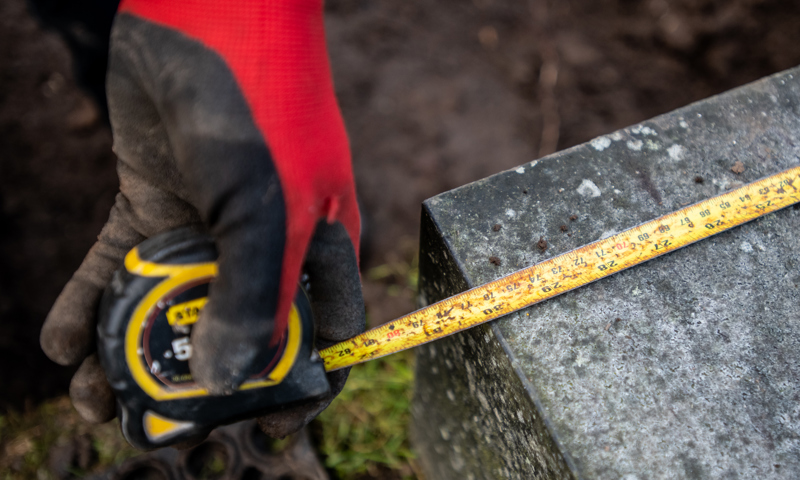Following a series of falling memorials in public graveyards around Scotland and the creation of a formalised Memorial Safety Inspection programme, Historic Environment Scotland has made a concentrated effort to ensure that the graveyards associated with our sites are as safe as possible for visitors, staff and contractors.
To improve our established procedures, monument conservation staff have undertaken specific training in memorial inspection and are currently evaluating each individual stone across our properties in care. We are in the process of formulating plans to implement standard procedures around gravestone safety to inform how we move forward with securing and repairing any stones that are found to be unstable.
Dunblane Cathedral
One of the most recent sites chosen to be inspected under our updated procedures was Dunblane. At time of writing, HES has carried out inspections of around 600 gravestones, with more than 130 to date identified as dangerous and requiring repair as a result of a number of factors including exposure and age.
Responsibility for the maintenance of memorials lies primarily with the lair owner or family. To help progress the repair program HES is appealing to owners of memorials to come forward. While some owners have been identified and are arranging repairs, HES is keen to involve the local community further in helping to identify more owners, as well as interpreting and recording the memorials in the graveyard to support the essential work being carried out (contact us via the Memorial Owner Notification form).
HES is prioritising stabilisation works to memorials posing the greatest risk to the public, and currently, some access restrictions are in place for safety reasons until repairs are completed. As these works are carried out, HES will continue to review the extent of the fenced areas to see where this can be reduced in order to lessen the impact of the access restrictions, with a rolling programme of phased repairs being undertaken.
The work will continue in 2023 on gravestones around the main entrance, with works progressing to secondary entrances and pathways.
St Andrews Cathedral
Similarly to Dunblane, we are also progressing with repairs at St Andrews where slightly more than 160 stones have been noted as potentially dangerous.
Stabilisation work is progressing around the vicinity of the graves of the Open Championship winners to ensure access to these historic memorials remains possible during the ongoing access restrictions.
What happens next
Inspections are underway and will be continuing on a prioritised basis until the whole estate has been surveyed. Once this is complete further regular headstone inspections will be programmed to ensure all stones covered within the remit of this project are regularly inspected.
As inspections are carried out, stones identified as unsafe or requiring attention will be recorded and secured, dependent on the severity of the issue, to ensure the safety of visitors to the site. There is a range of options available, from simply recording the issue and regularly recording inspections, to the laying flat of headstones or preventing access to areas using barriers.
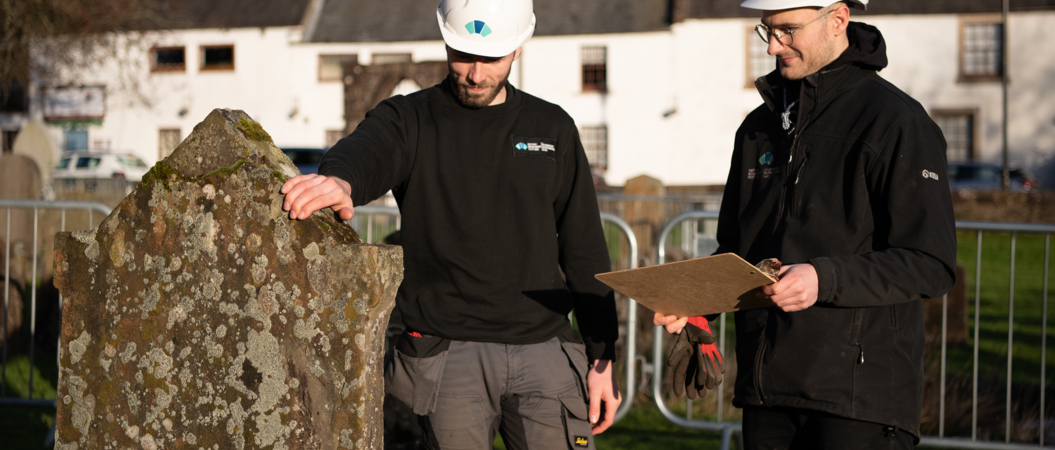
Gravestone repairs
Memorial gravestones are the property of the burial plot owner. If you think your family memorial may be affected, or you would like to find out more, contact us to discuss.
Memorial Owner Notification
